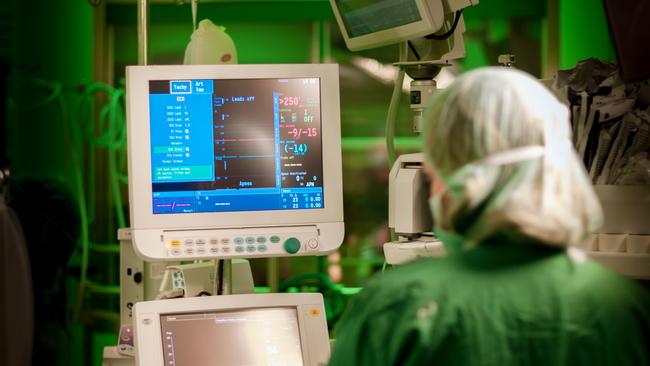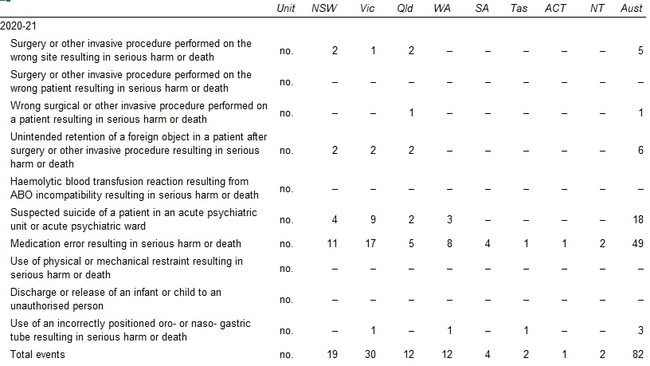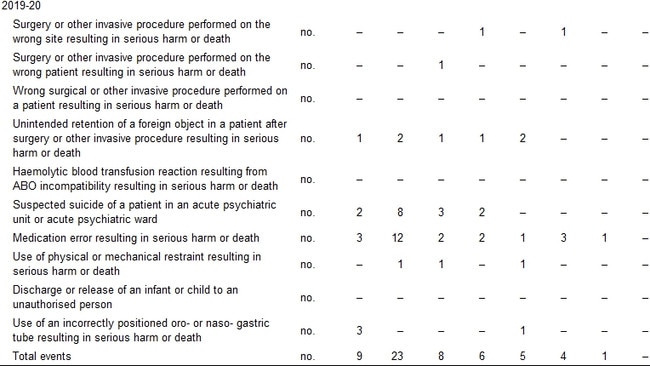Medication errors and foreign objects left in patients top SA hospital disasters
Despite foreign objects left inside patients and fatal medication errors, a national list of hospital disasters shows SA is actually improving.
SA News
Don't miss out on the headlines from SA News. Followed categories will be added to My News.
South Australian public hospital patients suffered catastrophic events causing severe harm or death ranging from multiple medication errors, to foreign objects being left in bodies after surgery, new data for 2019-20 and 2020-21 shows.
In a measure of good news the so-called “sentinel events” in SA fell from five cases to four over the two years since updated categories of events were introduced, bucking a national trend that saw Australia-wide cases soar from 56 to 82.
Tasmania was the only other jurisdiction to record a fall, going from 4 to 2 cases, while Victoria lead with 30 (up from 23) followed by NSW on 19 (up from 9) – the latter two with much larger populations.
South Australia’s four sentinel events in 2020-21 were all medication errors “resulting in serous harm or death.”
The previous year SA recorded one such medication case, but had two cases of foreign objects accidentally being left in patients “resulting in serious harm or death.”
There was also one case of a physical restraints being used on a patient with a similar disastrous result.
Prior to the category expansion on July 1, 2019, SA recorded up to 11 sentinel cases a year.

There were multiple cases interstate of surgeons operating on the wrong site of a patient with catastrophic results, in NSW, Victoria, Queensland and WA.
Queensland recorded one case of the wrong patient being operated on, and one case of the wrong surgical procedure being performed.
There were no cases of infants being discharged to the wrong person.
Of the 138 sentinel events over two years, medication errors were the most common with 73, followed by suspected suicides in an acute psychiatric ward at 33 and foreign objects being left in patients at 13.


While the most disastrous cases fell in SA, the less calamitous “adverse events” in hospitals jumped from 7.5 per 100 separations (admitted patients whose care has been completed) to 7.7, behind only WA on 7.8 and well ahead of the national average of 6.6.
Federal health officials note “sentinel events occur relatively infrequently and are independent of a patient’s condition.”
“The purpose of these programs is to facilitate a safe environment for patients by reducing the frequency of these events,” they note.
“The programs are not punitive and are designed to facilitate self‑reporting of errors so the underlying causes of events can be examined, and action taken to reduce the risk of these events re-occurring.
“Changes in the number of sentinel events reported over time do not necessarily mean Australian public hospitals have become more or less safe, but might reflect improvements in incident reporting mechanisms, organisational cultural change, and/or an increasing number of hospital admissions — these data are reported as numbers rather than rates.”
Adverse events include infections, falls and problems with medication and medical devices.




